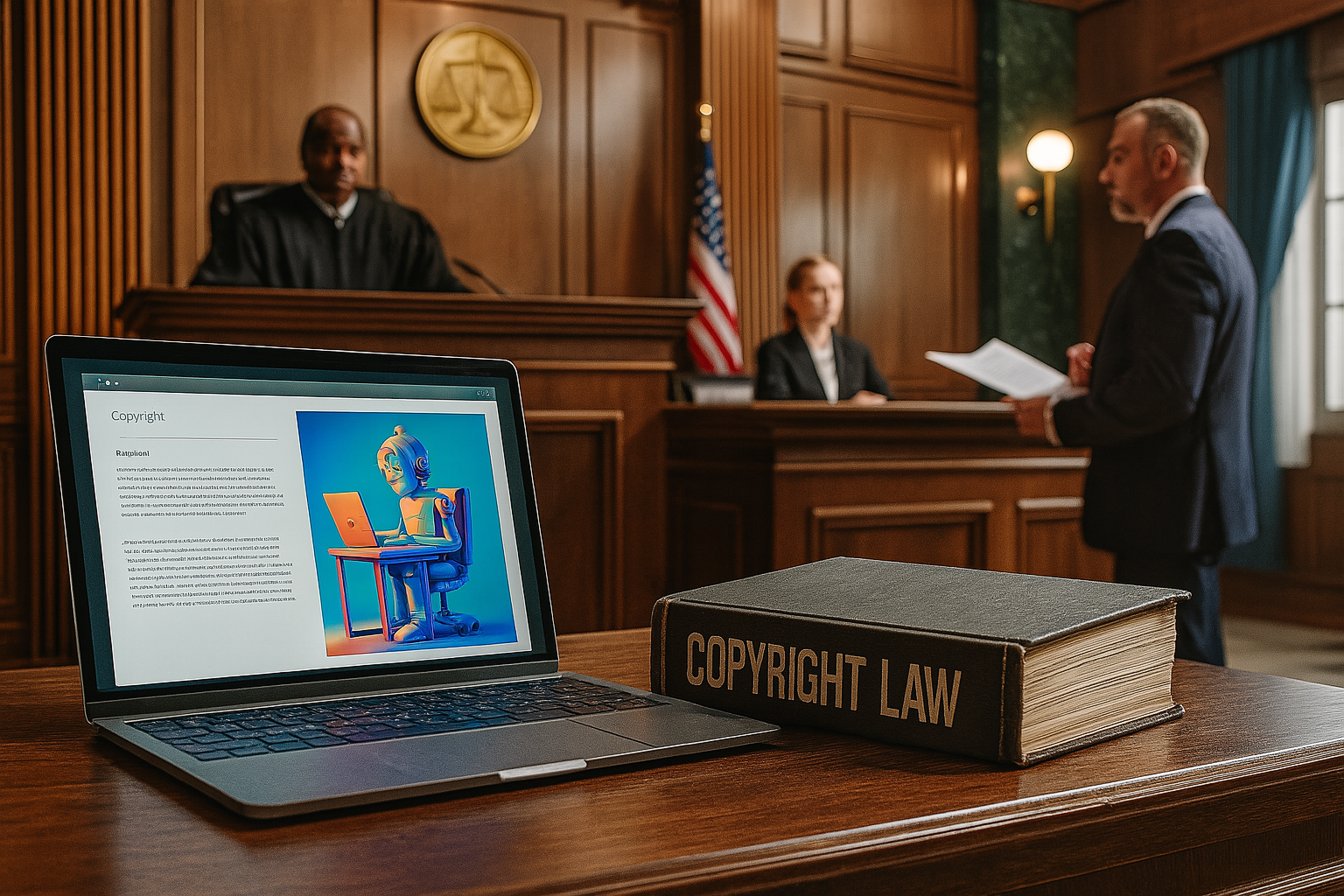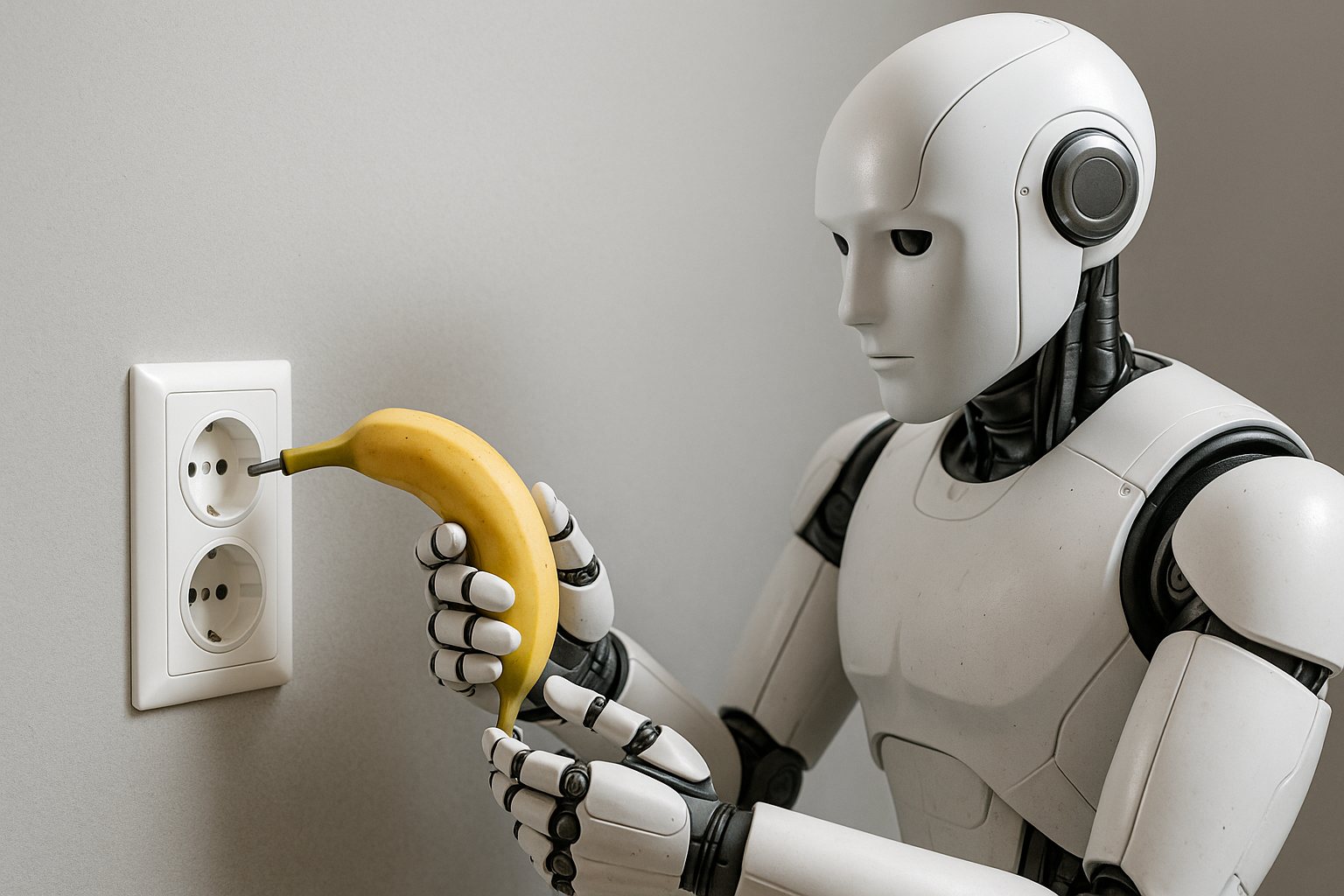Neue Regeln für geistige Schutzrechte im KI-Zeitalter
Die ursprüngliche Idee geistiger Schutzrechte stammt aus einer Welt der Knappheit. Das „Statute of Anne“ von 1710 führte erstmals Copyright ein, um Autoren wirtschaftliche Kontrolle über ihre Werke zu geben und Innovation durch zeitlich begrenzte Monopole zu fördern. Die USA übernahmen diese Logik explizit in ihre Verfassung – nicht zum Schutz „geistigen Eigentums“, sondern zur bewussten Förderung von Wissenschaft und Kultur.
Heute, über 300 Jahre später, leben wir in einer Welt digitaler Überfülle. Kreativität, Ideen und Inhalte sind dank Internet und KI nahezu grenzenlos verfügbar. KI generiert binnen Sekunden Texte, Musik, Bilder und Videos, oft kaum noch unterscheidbar von menschlichen Schöpfungen. Die historische Logik des Copyrights – kreative Knappheit künstlich zu erzeugen – verliert damit endgültig ihre Berechtigung.
Dabei könnte die Wissenschaft Vorbild sein: Forschung basiert auf klarer und offener Referenzierung bestehender Quellen. Wissenschaftlicher Fortschritt entsteht nicht durch exklusive Monopole, sondern durch transparente Weiterentwicklung. Ein moderner Umgang mit kreativen Inhalten sollte diesem Prinzip folgen.
Auch das Patentrecht muss umgebaut werden
Auch das Patentsystem leidet unter ähnlichen Problemen: Ursprünglich als Schutz technischer Innovationen gedacht, dienen Patente heute oft großen Konzernen zur Marktblockade. Kleinere Unternehmen verzichten zunehmend darauf und setzen stattdessen auf Geschwindigkeit, kundenzentrierte Umsetzung und offene Innovation.
Einzig Markenrechte erfüllen weiterhin eine zeitgemäße Funktion: Sie sichern globale Kommunikation und Vertrauen – Werte, die im KI-Zeitalter sogar wichtiger denn je sind.
Es ist höchste Zeit, geistige Schutzrechte radikal neu zu denken oder ganz abzuschaffen, wo sie nicht mehr passen. Statt künstlicher Monopole brauchen wir flexible Ansätze, die Innovation ermöglichen und Unternehmen befähigen, echten Wert zu schaffen – statt ihn zu verhindern.
Copyright abschaffen oder radikal verändern – Warum Kreativität keinen staatlichen Schutz mehr braucht
Die Idee des Copyrights war einfach: Kreative sollten für eine begrenzte Zeit wirtschaftlich von ihren Werken profitieren, um Innovation und neue Ideen zu fördern. Vor über 300 Jahren, in einer Welt manueller Vervielfältigung, war das sinnvoll. Doch diese Zeit ist endgültig vorbei.
Das Internet hat zuerst die Knappheit der Distribution beseitigt. Plötzlich konnten Inhalte grenzenlos und nahezu kostenlos verbreitet werden. Nun erleben wir nach den Social Media Plattformen und jetzt mit der Verbreitung von KI-Systemen den nächsten Schritt: die Aufhebung der Knappheit von Kreation selbst. Generative KI produziert heute scheinbar mühelos unbegrenzte Mengen kreativer Inhalte, von Texten und Bildern bis hin zu Videos und Musikstücken.
Kreativität ist kein knappes Gut mehr, das durch künstliche Monopole geschützt werden muss. Das eigentliche Problem ist heute Orientierung und Relevanz – nicht die Verfügbarkeit von Inhalten.
Zeit für ein neues Modell: Warum Copyright überholt ist
Gerichtsurteile in den USA zeigen, dass KI-generierte Inhalte meist als „transformativ“ gelten und damit Fair Use sind. Das Copyright verliert somit auch juristisch zunehmend an Relevanz. Statt weiterhin am Copyright festzuhalten, sollten wir uns am Vorbild der Wissenschaft orientieren: Wissenschaft funktioniert seit jeher über die klare Referenzierung auf bestehende Quellen und Verlinkungen. Dieses Prinzip könnten wir übernehmen, um Qualitäts- und Relevanzstandards sicherzustellen – ganz ohne Copyright.
Technologische Lösungen wie Blockchain-basierte Smart Contracts erlauben automatisierte, faire Vergütungen in Echtzeit und könnten mittelfristig das alte, langsame und ineffiziente Copyright-System vollständig ablösen. Ebenso könnte sich das sogenannte „Pay-per-Crawl“-Modell, wie von Cloudflare vorgeschlagen, etablieren: KI-Unternehmen zahlen direkt und automatisiert für hochwertige Inhalte, statt wie heute in juristischen Grauzonen zu agieren.
Doch vielleicht braucht es gar keine zusätzlichen Schutzmechanismen mehr. Denn eines zeigt sich heute deutlich: Kreativität und Innovation entstehen nicht mehr durch staatlich garantierte Schutzrechte, sondern durch schnelles Handeln, echtes Verständnis für Kunden und kluge Umsetzung. Die erfolgreichsten Unternehmen unserer Zeit – Amazon, Spotify oder Netflix – verdanken ihren Erfolg nicht Copyright oder Patentschutz, sondern Geschwindigkeit, Umsetzungskraft und echter Kundenzentrierung.
Copyright ist ein überholtes Modell. Unternehmen, Investoren und Politik sollten es abschaffen und stattdessen transparente, pragmatische Qualitäts- und Referenzstandards etablieren – ganz im Sinne einer modernen und offenen Wissensgesellschaft.
Patente radikal überdenken: Warum Geschwindigkeit heute wichtiger ist als Schutz
Patente wurden einst geschaffen, um technische Innovationen abzusichern und Investitionen in Forschung und Entwicklung zu fördern. Vor über hundert Jahren war diese Logik sinnvoll, heute aber steht sie der Realität globaler Märkte und digitaler Innovationszyklen diametral entgegen.
Großunternehmen nutzen Patente zunehmend strategisch als Waffen gegen Wettbewerber. Sie blockieren Märkte und verhindern Innovationen, statt sie voranzubringen. Patentstreitigkeiten zwischen Giganten wie Apple, Samsung oder Qualcomm kosten Millionen, ziehen sich über Jahre und erzeugen kaum noch gesellschaftlichen oder wirtschaftlichen Mehrwert.
Gleichzeitig haben kleinere und mittlere Unternehmen – die eigentlichen Innovationstreiber Europas – erkannt, dass Patente ihnen kaum echten Schutz bieten. Patentanmeldungen sind teuer, langsam und auf einzelne Märkte beschränkt. Internationale Wettbewerber, insbesondere aus China oder Südostasien, kopieren Technologien ohnehin schneller, als Patentanwälte reagieren können. Der vermeintliche Wettbewerbsvorteil durch Patente schmilzt damit auf null.
Erfolg durch Umsetzung – nicht durch Schutzrechte
Erfolgreiche Unternehmen setzen daher längst auf andere Faktoren: Geschwindigkeit, agile Umsetzung und konsequente Kundenorientierung. Nicht wer eine Innovation zuerst patentiert, sondern wer sie als Erster erfolgreich am Markt etabliert, gewinnt. Heute schützt kein Patent mehr dauerhaft vor Wettbewerb – aber schnelle, flexible Organisationen mit exzellenter Umsetzungskraft sichern langfristige Wettbewerbsvorteile.
Es ist höchste Zeit, Patente radikal zu überdenken oder sogar abzuschaffen. Statt langsame, teure und ineffiziente Schutzrechte aufrechtzuerhalten, sollten wir Rahmenbedingungen schaffen, die Umsetzungsgeschwindigkeit und echte Innovationskraft fördern. Ressourcen gehören nicht in Patentämter und Gerichtssäle, sondern in schnelle Produktentwicklung und marktorientierte Umsetzung.
Markenrechte stärken: Die einzigen Schutzrechte, die wir wirklich brauchen
Im Gegensatz zu Patenten und Copyright erfüllen Markenrechte weiterhin eine essentielle und unverzichtbare Funktion: Sie sichern globale Kommunikation und schaffen Vertrauen durch klare, wiedererkennbare Qualitätsversprechen. Marken schützen dabei nicht abstrakte Ideen oder technische Erfindungen, sondern ganz konkret die Verbindung zwischen Unternehmen und Verbrauchern.
Marken sind heute Fundament und Ankerpunkte unserer globalisierten Wirtschaft. Ob Apple, Bosch oder Adidas – starke Marken erleichtern Kaufentscheidungen, reduzieren Komplexität und garantieren Standards über kulturelle und geografische Grenzen hinweg.
Dabei wirken Marken ähnlich wie DIN-Normen oder ISO-Standards: Sie bilden universelle Kommunikationsmittel, die globale Zusammenarbeit erst ermöglichen. Ohne geschützte Markenrechte würden Kunden und Geschäftspartner ständig aufs Neue evaluieren müssen, wem sie vertrauen können – was Märkte fragmentieren und Wertschöpfung massiv erschweren würde.
Im digitalen Zeitalter schützt nur die Marke
Im KI-Zeitalter wächst die Bedeutung der Markenrechte sogar noch: In einer Welt unbegrenzter kreativer und technischer Möglichkeiten bieten starke Marken etwas, das sich nicht beliebig skalieren oder kopieren lässt – echtes Vertrauen und authentische Qualität. Gerade um KI-generierte Inhalte von echten, qualitativ hochwertigen Angeboten zu unterscheiden, werden Verbraucher künftig noch stärker auf Marken angewiesen sein.
Damit Marken ihre Funktion erfüllen können, benötigen wir klare und konsequent durchsetzbare Regelungen zum Schutz vor Markenmissbrauch. Wichtig sind einfache und transparente, global gültige Standards statt komplizierter bürokratischer Prozesse, wie wir sie heute im Patentwesen sehen.
Unternehmen sollten gezielt in starke, glaubwürdige Marken investieren – sie sind die einzigen geistigen Schutzrechte, die im digitalen Zeitalter wirklich Zukunft haben.
Welche Schutzrechte wir künftig wirklich brauchen
Neben Markenrechten brauchen wir im KI-Zeitalter neue, intelligente Schutzrechte, die Innovation fördern, statt sie auszubremsen. Besonders entscheidend sind drei Bereiche: Datenschutz, klare Schutzrechte für hochwertige Wissensquellen und KI-Trainingsdatensätze sowie der Schutz kritischer digitaler Infrastrukturen.
Datenschutz: Ermöglichen statt verhindern
Europas Datenschutzgrundverordnung (DSGVO) basiert derzeit auf komplizierten Regeln und Verboten, die Innovation oft erschweren. Doch im KI-Zeitalter brauchen wir einen Datenschutz, der nicht verhindert, sondern ermöglicht.
Das Prinzip: Volle Transparenz statt strenger Verbote. Nutzer und Unternehmen sollten jederzeit wissen, wer ihre Daten zu welchem Zweck nutzt, und deren Freigabe selbst steuern können. Dieser Ansatz schafft Vertrauen und motiviert Menschen dazu, Daten bewusst für innovative Anwendungen freizugeben.
Dafür brauchen wir einfache, globale und verständliche Standards. Technische Lösungen wie unabhängige Datentreuhänder, Datenschutz „by Design“ oder pseudonymisierte Datensätze sorgen dafür, dass persönliche Daten nutzbar bleiben, ohne Privatsphäre zu gefährden.
Ermöglichender Datenschutz ist keine Last, sondern ein Wettbewerbsvorteil: Unternehmen, die transparent und verantwortungsvoll mit Daten umgehen, gewinnen langfristig Vertrauen und schaffen nachhaltige Marktchancen.
Schutzrechte für hochwertige Wissensquellen und KI-Trainingsdatensätze
Durch den Aufstieg KI-basierter Systeme entsteht ein neuer Markt für hochwertige, validierte Wissensquellen und Datensätze. Leistungsstarke KI-Modelle benötigen strukturierte, geprüfte und qualitätsgesicherte Daten. Genau hier entsteht akuter Bedarf an neuen Schutz- und Vergütungsmechanismen.
Modelle wie Cloudflares „Pay-per-Crawl“-Ansatz bieten eine praktische Lösung: KI-Anbieter zahlen gezielt für hochwertige Trainingsdaten und Wissensquellen. Damit entstehen Anreize für Datenproduzenten, Qualität zu sichern und kontinuierlich zu verbessern. Blockchain-basierte Smart Contracts könnten diese Vergütung transparent, automatisiert und fair regeln.
Anders als beim klassischen Patentschutz geht es hier nicht um exklusive Monopole, sondern um einen offenen, transparenten Marktplatz für Qualität. Schutzrechte dienen hier nicht mehr dem Ausschluss, sondern der fairen und gezielten Monetarisierung hochwertiger Wissensquellen und Datensätze.
Schutz kritischer digitaler Infrastrukturen
Der zunehmende Einsatz autonomer KI-Systeme erzeugt neue Risiken: Digitale Infrastrukturen – von Verkehrs- und Energiesystemen bis hin zu Finanznetzwerken – sind potenzielle Angriffsziele von KI-gestützten Manipulationen.
Wir brauchen deshalb klare Schutzrechte und verbindliche Standards. Unternehmen und öffentliche Institutionen müssen verpflichtet werden, robuste Sicherheitsmaßnahmen umzusetzen: transparente Algorithmen, unabhängige Prüfungen sowie klare Notfall- und Rückfallmechanismen.
Europa sollte hier eine aktive Rolle einnehmen und weltweit verbindliche Standards setzen. Der Schutz kritischer digitaler Infrastruktur ist keine optionale Aufgabe, sondern zwingend notwendig für gesellschaftliche und wirtschaftliche Stabilität im KI-Zeitalter.
Geistige Schutzrechte im KI-Zeitalter radikal neu denken
Traditionelle Schutzrechte wie Copyright und Patente stammen aus einer Welt knapper Kreativität und Innovation. Im KI-Zeitalter sind Ideen und Inhalte jedoch im Überfluss verfügbar. Staatlich geschaffene Monopole haben ihre Berechtigung verloren und bremsen heute oft mehr, als sie fördern.
Copyright sollte daher abgeschafft oder durch flexible Referenz- und Vergütungsmodelle ersetzt werden, die Eigenverantwortung und freien Wissensaustausch fördern. Patente haben ihre Legitimation ebenso verloren – wir brauchen keine bürokratischen und teuren Schutzverfahren, sondern sollten konsequent auf Geschwindigkeit, Umsetzungskraft und Kundenorientierung setzen.
Markenrechte hingegen bleiben unverzichtbar. Gerade in einer KI-dominierten Welt schaffen Marken Vertrauen, Orientierung und Qualität. Sie sichern freiwillige, globale Zusammenarbeit – ganz im Sinne unternehmerischer Freiheit und Eigenverantwortung.
Darüber hinaus brauchen wir keine neuen Verbote oder staatlichen Eingriffe, sondern intelligente Schutzprinzipien, die auf Eigenverantwortung und Transparenz setzen:
- Ein Datenschutz, der Innovationen ermöglicht, indem Menschen und Unternehmen eigenverantwortlich Kontrolle über ihre Daten behalten.
- Freiwillige, transparente Modelle zur Monetarisierung hochwertiger Wissensquellen und KI-Trainingsdaten, statt staatlich verordneter Monopole.
- Klare, verbindliche Sicherheitsstandards für kritische digitale Infrastrukturen, bei denen Unternehmen eigenverantwortlich Lösungen entwickeln und umsetzen, statt nach dem Staat zu rufen.
Fazit: Freiheit statt Schutzrechte – Innovation braucht Eigenverantwortung
Unternehmer und Investoren sollten diesen Wandel eigenverantwortlich gestalten – ohne sich hinter staatlichen Schutzschildern und Monopolen zu verstecken. Freiheit, Verantwortung und Eigeninitiative sind die wirklichen Erfolgsfaktoren im KI-Zeitalter.
Wer jetzt noch auf staatliche Schutzrechte und regulatorische Eingriffe setzt, verschenkt wertvolle Innovationspotenziale und gefährdet die eigene Wettbewerbsfähigkeit. Die Zukunft gehört jenen, die geistige Schutzrechte neu definieren: als Chance und Motor für Freiheit, Innovation und Eigenverantwortung – nicht als staatliche Regulierung oder überholtes Monopol.



